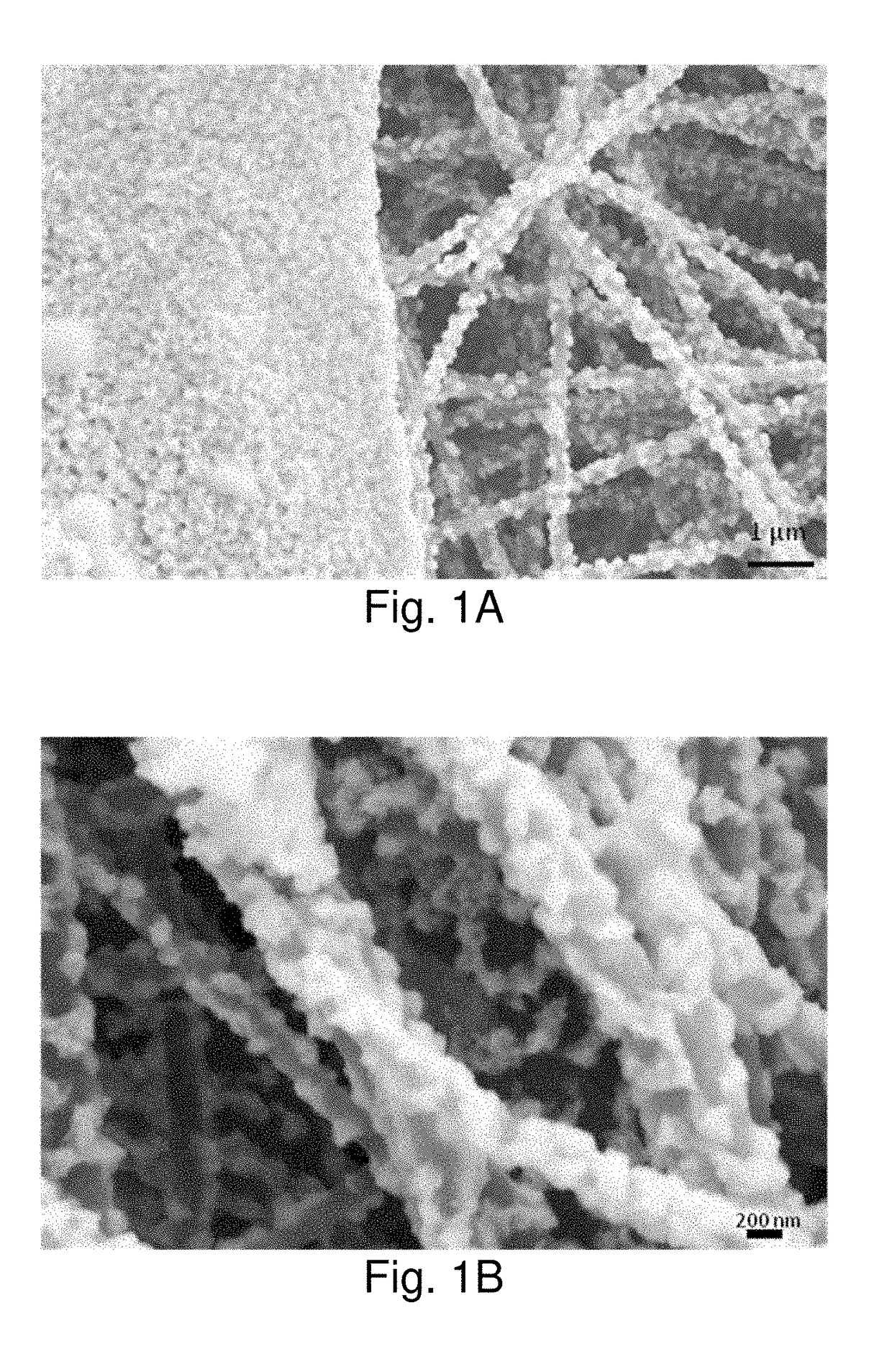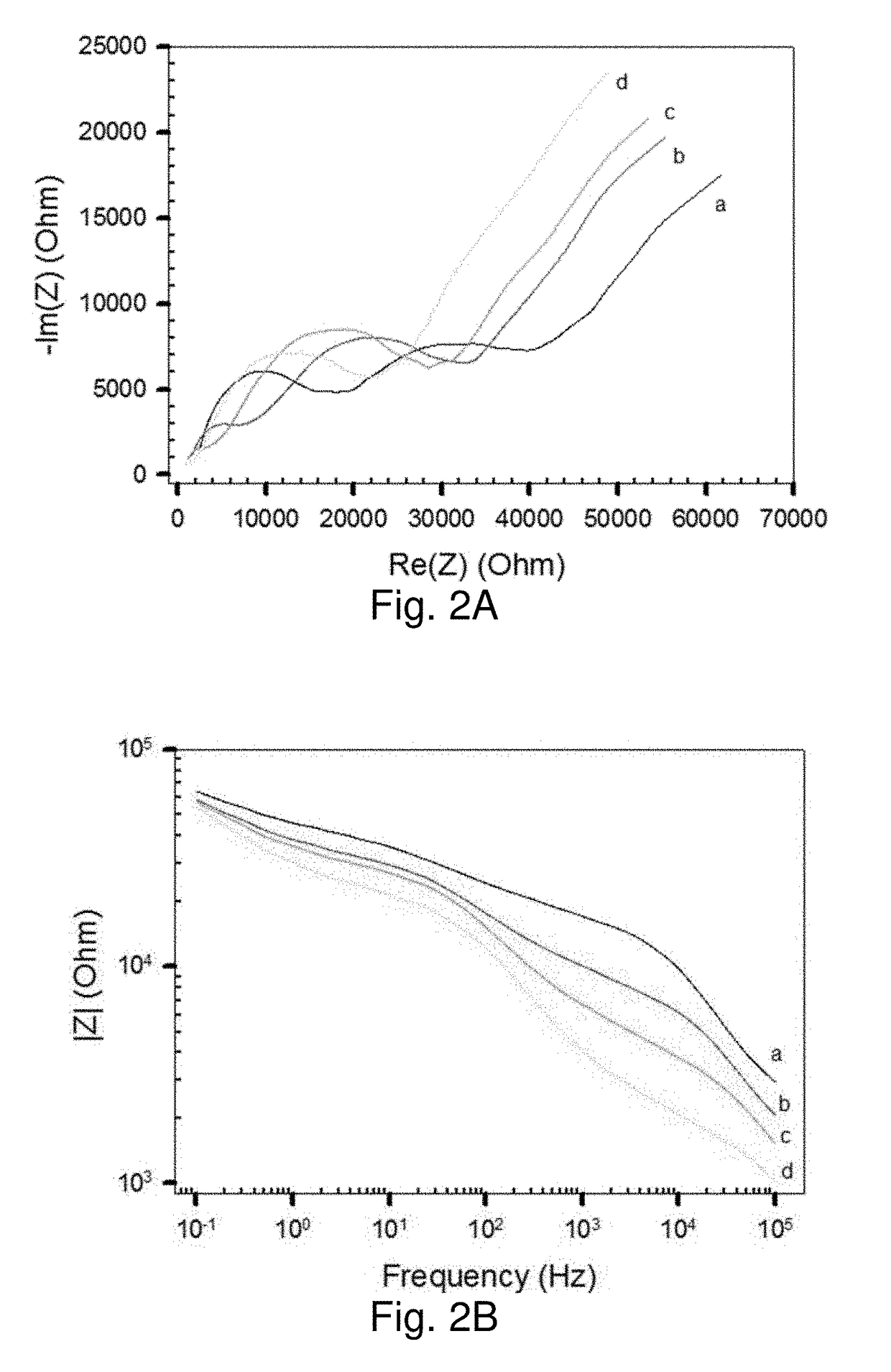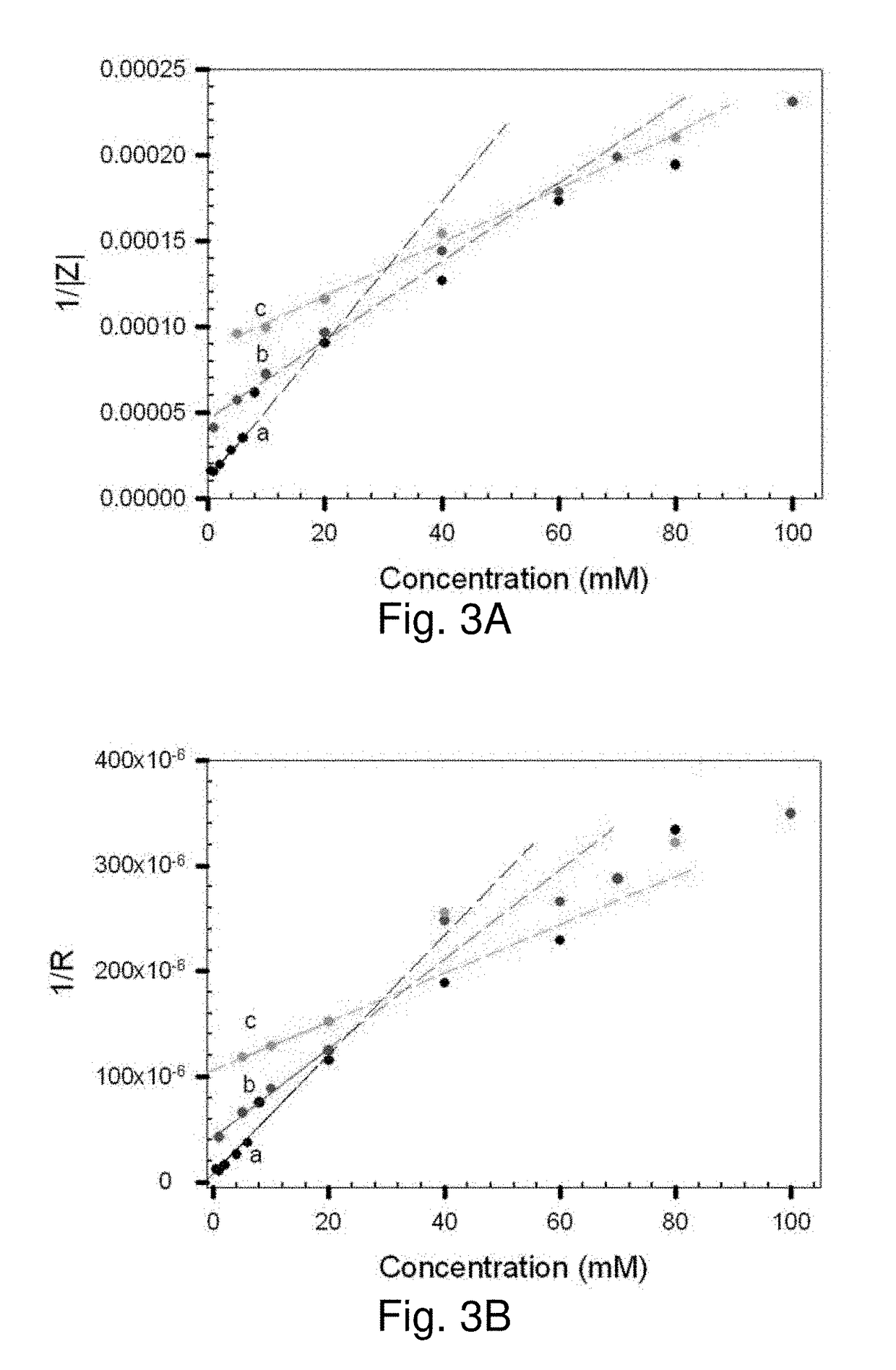Nanoparticle sensor having a nanofibrous membrane scaffold
- Summary
- Abstract
- Description
- Claims
- Application Information
AI Technical Summary
Benefits of technology
Problems solved by technology
Method used
Image
Examples
example 1
Experimental Section
Chemicals and Synthesis of Gold Nanoparticles.
[0095]Hydrogen tetrachloroaurate trihydrate (99%), tetraoctylammonium bromide (99%), decanethiol (DT, 96%), sodium borohydride (99%), 11-mercaptoundecanoic acid (MUA, 95%), (poly)diallyldimethylammonium (PDA) (20%), sodium acrylate, sodium chloride (NaCl), potassium chloride (KCl), lithium chloride (LiCl), and graphite powders were purchased from Aldrich. Solvents included hexane (Hx, 99.9%) and toluene (Tl, 99%) from Fisher, and ethanol (99.9%) from Aldrich. Water was purified with a Millipore Milli-Q water system. 2,2,6,6-Tetramethylpiperidinooxy (TEMPO, 98%) was purchased from Acros. Sodium hypochlorite (NaClO solution, available chlorine 7-10%) was purchased from Sigma-Aldrich. Sodium bromide (NaBr) was obtained from Fisher Scientific Company. Polyacrylonitrile (PAN) having an average molecular weight (Mw) of 150 kDa was purchased from Sigma-Aldrich. Poly(ethylene terephthalate) nonwoven substrate (PET microfilter...
example 2
[0159]The nanofibrous paper chemiresistor sensors employ dendronized nanoparticles that exhibit structurally tunable and negative-going responses to human breathing and sweating processes. The device consists of multilayered fibrous paper as a low-cost biocompatible matrix and dendron coated gold nanoparticles as designated sensing elements with tunable sizes, shapes, and structures. The ability to control the interparticle spatial interactions [Edel et al. 2016, Scultz et al. 2013] in a fibrous membrane represents an important pathway to utilize their unique electrical and optical properties for constructing the 3D sensing interfaces. The multilayered fibrous membrane consists of a cellulose nanofiber (CN) and an electrospun poly(acrylonitrile) (PAN), nanofibrous layer, sup-ported on a nonwoven poly(ethylene terephthalate) (PET), film.[Mat et al 2010] The membrane paper features an extremely high surface to volume ratio and nanofiltration capability. With metal nanoparticles, which...
PUM
 Login to View More
Login to View More Abstract
Description
Claims
Application Information
 Login to View More
Login to View More - R&D
- Intellectual Property
- Life Sciences
- Materials
- Tech Scout
- Unparalleled Data Quality
- Higher Quality Content
- 60% Fewer Hallucinations
Browse by: Latest US Patents, China's latest patents, Technical Efficacy Thesaurus, Application Domain, Technology Topic, Popular Technical Reports.
© 2025 PatSnap. All rights reserved.Legal|Privacy policy|Modern Slavery Act Transparency Statement|Sitemap|About US| Contact US: help@patsnap.com



